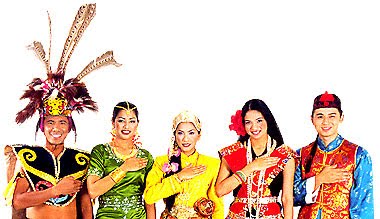Can we move beyond a racialised society?

The real issue, therefore, becomes a question of how equal treatment does not ignore or violate minority rights in the name of the majority, be it within or across the ethnic divide.
Mohamed Imran Mohamed Taib, todayonline.com
Last week, IPS and Onepeople.sg released a study on indicators of racial and religious harmony. The results point to a healthy indication of social harmony, particularly within the public sphere. There is no doubt that Singapore has gotten some aspects right in terms of managing racial and religious diversity.
But the task of strengthening our social fabric requires us to dig beneath the surface. The study, which was based on surveys, must be corroborated with deeper insights from the lived reality of Singaporeans in general.
For a start, several findings from the study are a cause for concern. For example, only 60 per cent believed that they could learn from other races, 55 per cent were interested in meeting people of other races, and 50 per cent were interested in understanding other people’s customs.
What these revealed is something that we might have been aware of: That the different ethnic communities continue to exist in segregated spheres of comfort with little meaningful interactions beyond what is necessary in schools, workplaces and the markets.
A CONTRADICTION IN NATION-BUILDING
Part of the reason for this lies in the prevalent narrative of “deep fault-lines” derived from Singapore’s past encounters with racial and religious riots. Thus, it follows that each community must be kept apart while promoting civic interactions in common shared spaces or the public sphere. Consequently, an over-arching economic prosperity and effective legal enforcement play a role in keeping tensions at bay.
The CMIO model, thus, became the de facto way of dealing with ethnic diversity in Singapore. As a result, social policies are dealt through the prism of racial lenses, which translates into the existence of race-based self-help groups. These groups then continue to derive their legitimacy from national data, such as health and education indexes, which are churned along racial categories.
This forms a significant contradiction in our nation-building process. Despite our professed desire for a unified nation “regardless of race, language or religion”, what had transpired for the last four decades was the opposite. Race has become a single most important marker for our social existence. In other words, we have become a totally racialised society.
There is hardly a moment in our social interactions that we are not reminded of our racial identity – from the imprint in our identity cards, to our schooling years to job applications. This invariably leads to a hardening of identity, even as we continuously choose to exoticise the “other” through generalised traits and characteristics. The most tragic consequence for all these is the continuous perpetuation of stereotypes.
DANGERS OF STEREOTYPES
Social theorist, Alana Lentin in her 2008 book, Racism, argues that the stereotype is often a basis for discrimination. Where stereotype exists, discrimination is bound to occur.
A personal anecdote illustrates this point. A friend who owns a small business consistently refuses to hire Malay workers because of his view that Malays are generally non-industrious. Could this be a reason why many Malays think that they must work doubly hard to prove their worth and rise up the ladder in their organisations?
In the IPS-Onepeople.Sg study, slightly more than 30 per cent believed that Indians and Malays had to work harder compared to other races to reach top positions in their organisations. There could be a range of explanations. But we cannot deny that this is one issue that has to be tackled.
Stereotypes, intentional or not, often injure a person’s worth by reducing one’s humanity to a set of fixed and essentialised traits. For some, it may appear harmless to make generalisations on a particular race. But in times of crisis, these very stereotypes can be deadly tools.
When Indonesia faced severe financial crisis in 1998, the ethnic Chinese minority were attacked simply because they were stereotyped as “corrupt, rich and exploitative” of the local communities. The Jews suffered similar fate that led to the horrific Holocaust. In Europe and America today, stereotypes on Islam continue to drive Islamophobic attacks on Muslim communities.
In all of these instances, stereotypes pose the greatest danger to minority groups, particularly in vulnerable situations.
BEYOND RACIAL DIVIDES
Thus far, Singapore has done well in mostly keeping overt discrimination at bay. It is heartening to note that more than 90 per cent of minorities from the IPS-Onepeople.Sg survey felt no discrimination in terms of public services. But more can be done to stem the problem of stereotypes before it leads to full-blown exclusionary practices.
To do this, one needs to revisit the CMIO model and find new ways to overcome the consequence of categorising individuals in neat categories. A person’s identity is much more complex and fluid; it cannot be reduced to a simple marker of how one dresses, what one eats, the festivals one celebrates or the colour of one’s skin.
More importantly, there are no defining traits to be found in each ethnic group. There are only human traits and these traits emerge in individuals in a given context. Social problems, too, cannot be attributed to any racial categories. They are primarily political and located in the way we organised our society through policies, institutions and distribution of resources.
Read more at : http://www.todayonline.com/singapore/can-we-move-beyond-racialised-society

